Stories from the Road
North America
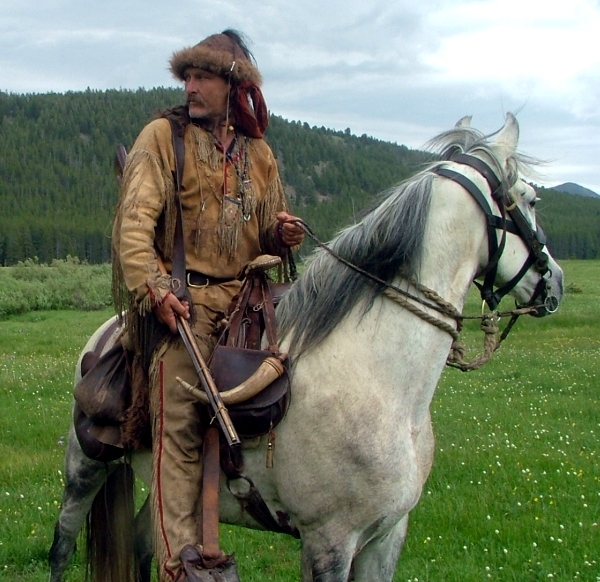
|
Stories from the Road North America |
|
Using traditional “mountain man” equipment and black-powder firearms, Hawk Hurst rode from Mexico to Canada.
Click on any image to go to the story.
 |
Long Rider Legends In 1912 four riders known as the Overland Westerners (left) gathered at the small town of Shelton, Washington. They were preparing to embark on a 20,000 mile ride across America that they hoped would bring them fame and fortune. Instead they disappeared into oblivion. An article entitled Forgotten Heroes, written by CuChullaine O’Reilly in 1997, recounts their tragic story and began an effort to help gain recognition for the legendary Long Riders.
|
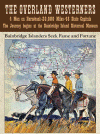 |
Longest 20th Century Horse Journey Honoured Four idealistic men set off to ride to all 48 American state capitals. The gruelling three-year odyssey made by the Overland Westerners (left) took them across deserts, mountains and swamps. But what should have been a joyful journey became a tale of tragedy. An investigative article written in 2015 by Washington journalist Tristan Baurick helped bring this neglected story out of the shadows. Entitled The Longest Ride, the article includes photographs taken during the journey and is enriched by explanatory videos.
|
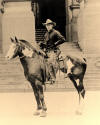 |
Scholastic Study Reveals New Evidence about Remarkable Ride The story of the Overland Westerners’ ride to 48 American state capitals should have made them legends. The four men, led by George Beck (left), had endured three years in the saddle. When they arrived at their final destination, the Panama-Pacific International Exposition held in San Francisco in 1915, they expected to be greeted as heroes. Instead an Irish cop yelled, “Get them hay burners off the street." What Beck and his friends didn’t know was that they were victims of changing times. The American public was no longer interested in mounted champions. They were clamouring instead for modern marvels. Thus for more than a century no one realized that social and political factors had played an important part in undermining the success of the Overland Westerners. In 2016 American Long Rider Samantha Szesciorka was the first scholar to realize that the fate of the “lost” Long Riders was connected to the dawning of the motor age. Her in-depth study, entitled Chasing Fame from the Saddle: The Odyssey of the Overland Westerners (PDF), reveals how the advent of the automobile had unforeseen implication for Beck and his companions.
|
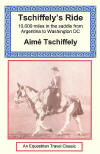 |
Special Illustrated article about Tschiffely’s Ride
In the company of his two horses, Mancha and Gato, Long Rider Aime
Tschiffely set off from Argentina in 1924. The purpose of the 10,000 mile
journey was to ride from Buenos Aires to Washington DC. What Tschiffely did
not suspect was that ahead of him lay a host of adventures, including rope
bridges, vampire bats, sand storms, treacherous mountains, quicksand and
hostile natives. The Illustrated History of
Tschiffely’s Ride recounts the story of the greatest equestrian epic
of the twentieth century, a journey that came about because a man and his
horses refused to quit - ever! Special photographs provided by the
Tschiffely Literary Estate depict Tschiffely and his horses as they made
their way across deadly deserts, passed through jungles and traversed
sky-high mountain passes. |
 |
Riding Across Colonial America Hezekiah Prince was a respected builder and community leader in late 18th century Maine. In the winter of 1793 the young scholar made a remarkable 1200 mile journey across the newly formed United States. During the course of this singular journey, Hezekiah met George Washington, whom he noted “was a fine rider on horseback.” Hezekiah also observed the White House being built and kept a detailed diary during his journey.
|
 |
A Death on the River Henry J. Coke was a renowned traveller and an English gentleman in every sense of the word. Coke spent his time exploring seldom-seen portions of the globe, hunting dangerous animals and then writing exciting accounts of his various adventures. His best known book, “Tracks of a Rolling Stone,” recounts how the California gold rush of 1849 lured the young adventurer to North America. Having secured the services of two American guides, Coke set off to ride from Fort Laramie, in modern day Wyoming, to the Pacific coast. Having suffered a multitude of hardships en route, Coke, his two companions, and their horses found themselves on the banks of the untamed Snake River, where a terrifying story unfolded.
|
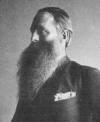 |
A Frightening Journey Across Arizona |
 |
Riding Through New England Daniel Denison Slade, one of America's first veterinarians, made an equestrian journey across New England in 1883. Dr. Slade was an advocate of the physical benefits of what was then termed equestrianopathy. “No exercise can compare with that of horseback riding,” he wrote.
|
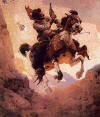 |
Riding the Outlaw Trail |
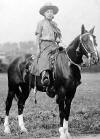 |
Ocean to Ocean “Two Gun” Nan Aspinwall led an extraordinary life, which included being a headline act as a sharp-shooter in Buffalo Bill's Wild West Show. According to legend, a disagreement between rival showmen Buffalo Bill Cody and Pawnee Bill led to the circumstances under which Nan made her solo transcontinental ride. Could a woman ride from the Pacific to the Atlantic alone the showmen argued? Nan set off in September 1910 to prove it was possible. Mounted on her thoroughbred, Lady Ellen, the lady Long Rider carried a letter from San Francisco Mayor McCarthy addressed to his colleague, Mayor Gaynor in New York. A tribute to the first woman to ride "Ocean to Ocean", written by the renowned cowboy poet, TJ Casey.
|
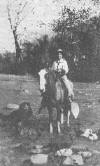 |
An Incident in Arizona Alberta Claire, "the Girl from Wyoming," made one of the most remarkable rides of the early twentieth century. The daughter of an English sea-captain who settled in frontier Wyoming, young Alberta set off in 1912 on an 8,000 mile journey which took her from Wyoming to Oregon, south to California, across the deserts of Arizona, and on to a triumphant arrival in New York City. The diminutive Long Rider undertook her journey for two special reasons. Though few people now recall, women were denied the right to vote in 1912. Furthermore, polite society expected women to ride in a side saddle. Thus Alberta made her ride in an effort to promote the still-revolutionary ideas of a woman's right to vote and her right to ride astride! After Teddy Roosevelt endorsed women's suffrage in the Presidential election of that year, the 500 year old use of the side saddle disappeared from use almost overnight thanks to Alberta Claire and women like her. In 1915 Alberta wrote an article which explained how she had to use her pistol and defend herself from a very dangerous man. |
 |
The Old Soldier Who Refused to Surrender He heard the word “impossible” the day he was born. But Colonel Charles Young, the son of freed slaves, spent his life proving that he was a winner in every sense of the word. Born in dire poverty in Kentucky in 1864, Charles Young overcame extreme prejudice and became the third African-American to graduate from the United States Military Academy at West Point. This article recounts how Young rode from Ohio to Washington DC in 1918, to prove that he was physically strong enough to fight in the First World War.
|

|
The Heartbreak Trail to Texas Every generation sees an army of young boys who dream about saddling up a horse and riding off in search of the legendary “Old West.” Many dream. Few have the courage to mount up and ride off on a quest for that elusive mirage. Marshal Ralph Hooker, one of the Founding Members of The Long Riders’ Guild, made such a journey in the early 1920s. Thirty years later another brave lad stepped up to the saddle and then cantered off in search of adventure. And like Marshal Hooker, young Tom Cashner found it too. It was 1951 and Cashner was barely eighteen when he set off on an equestrian Odyssey across a still largely rural America. But while Paladin, Yancy Derringer and a host of other television westerns were peddling the cowboy fantasy, Cashner was out living the equestrian reality. And what he found was nearly two thousand miles worth of adventures and hardships. It was a journey both remarkable, and in many ways ordinary, one day full of tragedy, a few miles later full of unexpected romance. By the time Cashner stepped down from the saddle, he was on the other side of an invisible barrier that would forever set him slightly apart from those he left behind. Because the boy who left was not the man who arrived. Along the way “Tom” had lost his heart and his horse. But “Tex” had discovered a new name and an appreciation for life that comes to those who are brave enough to seek out the extraordinary. This is his never before published story. |
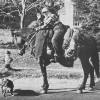
|
Across America on Horseback |
 |
A Dream Fulfilled In July 1962, when equestrian travel was in danger of blinking out, three young women, known as the Rangerettes, set off to ride from Pennsylvania to California.
|
 |
Growing up on the Pacific Crest Trail In 1969 Barry Murray, his wife and three young children began a journey that was to become a Long Rider legend. The Murrays were determined to be the first family to ride the length of the Pacific Crest Trail, a gruelling 4,286 kilometres (2,663 miles) long route that leads from Mexico to Canada. This article tells the inspiring story of how husband, wife, children and horses rode into history.
|
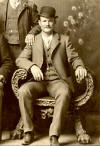 |
|
 |
Riding Through Death Valley and the Mojave Desert Lucy Leaf spent three years riding through the United States. In 1973 she and Karla Edmunds rode from Bethel, Maine to Missoula, Montana. The following year Lucy rode alone from Missoula, Montana to the Pacific Ocean in Northern Oregon, and then down the coast to Northern California. In 1975 she walked and packed her horse, Igor, in the Sierra Nevada range, across Death Valley to Phoenix, Arizona and then on to El Paso, Texas. In March 1976 she rode from the Guadalupe Mountains in West Texas to Northern Virginia via the Deep South. This is her account of she rode through Death Valley.
|
 |
Call of the Wild |
 |
The Long Trail West |
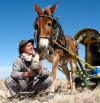 |
Lost Sea Expedition Documents a Changing America Bernie Harberts and his mule, Polly, set off in 2009 to travel 2,500 miles with a tiny wagon from Neptune, Saskatchewan to Fort Hancock, Texas. During an in-depth Question & Answer interview with the Guild, Bernie discussed his journey, the film he made single-handed, and the unexpected discoveries he made along the way. |